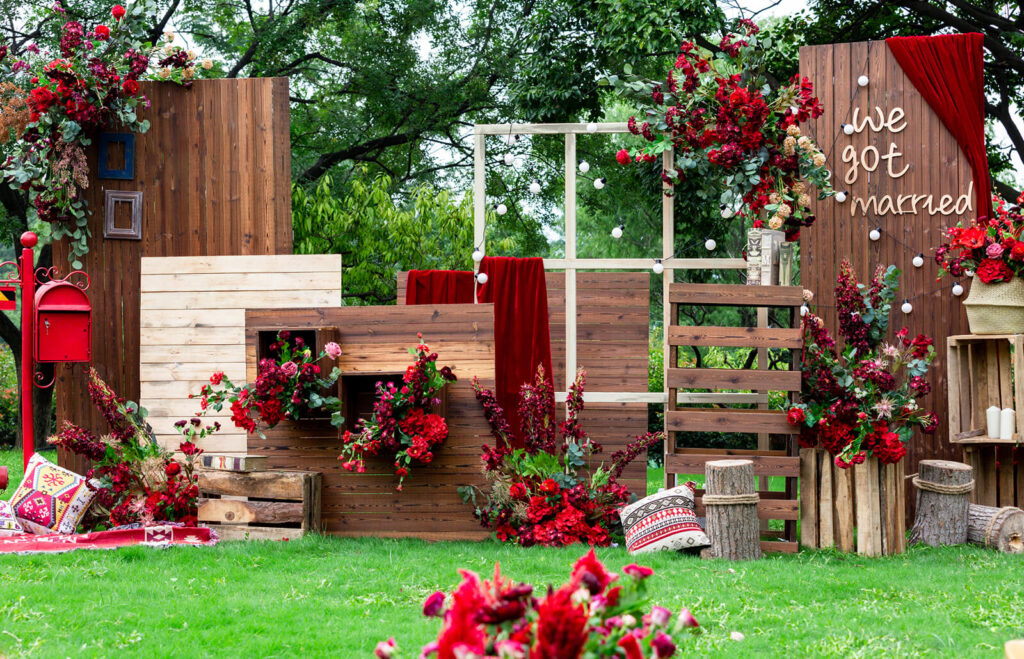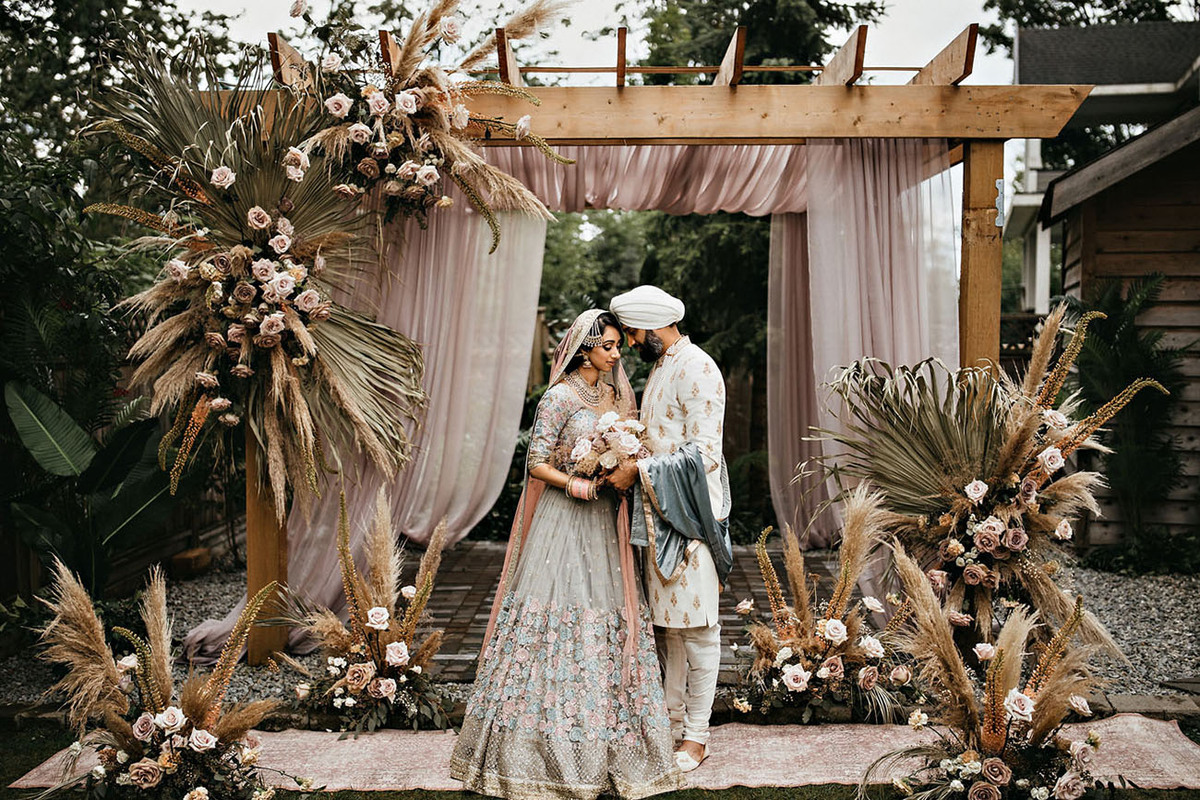Planning a wedding can be an exciting but expensive endeavor. From the dress to the venue, there are countless elements to consider. One aspect that often gets overlooked initially is the cost of wedding flowers. Flowers can add a touch of elegance and romance to your wedding day, but they can also put a significant dent in your budget if not managed properly. In this article, we will explore some tips to help you get the best bang for your buck when budgeting for wedding flowers.
Understanding the Costs of Wedding Flowers
Planning a wedding involves careful consideration of various expenses, and one significant aspect is the cost of Sydney wedding flowers. To ensure that you have a comprehensive understanding of the expenses involved, it’s essential to delve into the details. Wedding flowers can be broken down into several categories, each contributing to the overall cost:
Bridal party flowers
This category encompasses the beautiful bouquets for the bride and bridesmaids, boutonnieres for the groom and groomsmen, and corsages for the mothers and grandmothers. These floral arrangements play a crucial role in complementing the attire of the wedding party and adding an elegant touch to the overall aesthetic.
Ceremony flowers
As you walk down the aisle, you want the ambiance to be enchanting and captivating. Ceremony flowers include arrangements such as aisle decorations, altar arrangements, and pew markers. These floral accents create a picturesque setting, enhancing the beauty of the ceremony space and leaving a lasting impression on your guests.

Reception flowers
Once the ceremony concludes, the celebration continues at the reception venue. Here, the reception flowers take center stage, adorning the tables and creating a captivating atmosphere. Centerpieces, table arrangements, and any other floral decor you plan to have at the reception venue fall under this category. These arrangements not only add a touch of elegance but also serve as conversation starters among your guests. Learn more about the most romantic flower arrangements for anniversaries.
While understanding the different categories of wedding flowers is crucial, it’s important to note that the expenses can vary significantly based on various factors. The size of your wedding party, the number of guests, and the complexity of your floral arrangements all play a role in determining the final cost.
However, it’s not just the obvious costs that you need to consider when budgeting for wedding flowers. There are also hidden costs that can catch you by surprise if not accounted for. These additional expenses may include delivery fees, setup and breakdown fees, and any charges for special requests or custom designs. It’s essential to factor in these potential costs to avoid any unexpected financial burdens.
Furthermore, it’s worth mentioning that the world of wedding flowers offers a plethora of options. From classic roses to exotic orchids, the choices are endless. Each flower has its own unique characteristics, symbolism, and price range. Taking the time to explore different flower varieties and their associated costs can help you make informed decisions that align with your vision and budget.
Remember, wedding flowers are not just an expense; they are an investment in creating a memorable and visually stunning celebration. By understanding the costs involved and considering both the obvious and hidden expenses, you can ensure that your flower budget is well-planned and allows you to bring your dream wedding to life.
Setting a Realistic Flower Budget
Setting a realistic flower budget is crucial to ensure you don’t overspend or compromise on your vision. To do this, you need to determine your priorities and allocate your funds wisely.
Determining Your Priorities
Start by identifying the floral elements that are most important to you. Is it the bridal bouquet? The ceremony arch? The reception centerpieces? Knowing what matters most to you will help you allocate your budget accordingly. Consider discussing your priorities with your partner and any key decision-makers to ensure you’re all on the same page.
When determining your priorities, think about the overall theme and style of your wedding. Are you going for a romantic and whimsical vibe or a modern and minimalist look? The type of flowers and arrangements you choose will play a significant role in setting the tone for your big day.
Additionally, consider the season in which you’re getting married. Some flowers are more readily available and affordable during certain times of the year. By choosing flowers that are in season, you can save money and ensure the freshest blooms for your wedding.
Don’t forget to take into account any personal preferences or sentimental value attached to specific flowers. If there’s a flower that holds special meaning to you and your partner, it’s worth allocating a portion of your budget to include it in your arrangements.

Allocating Funds Wisely
Once you have determined your priorities, it’s time to allocate your funds wisely. Start by setting a total budget for your wedding flowers, taking into account your overall wedding budget. As a general guideline, flowers typically account for about 10% of the wedding budget.
However, keep in mind that this percentage can vary depending on your specific preferences and priorities. If flowers are a top priority for you, you may choose to allocate a larger portion of your budget to them. On the other hand, if you have other elements of your wedding that are equally important, you may need to adjust your flower budget accordingly.
Next, divide your flower budget among the different floral categories, such as bridal party flowers, ceremony flowers, and reception flowers. You can allocate a larger portion of your budget to your top priorities and adjust accordingly for the remaining categories. Remember to include any hidden costs and fees when dividing your budget.
When allocating funds, consider the size and scale of your wedding. If you’re having a small, intimate gathering, you may be able to allocate more funds to each floral category. However, if you’re planning a grand affair with a large guest list, you may need to be more strategic in your budget allocation.
Lastly, don’t forget to account for any additional floral needs, such as flowers for the cake, boutonnieres for the groom and groomsmen, or corsages for the mothers. These smaller details can add up, so make sure to allocate a portion of your budget for them as well.
By setting a realistic flower budget and allocating your funds wisely, you can have the beautiful floral arrangements you desire without breaking the bank. Remember to do your research, consult with a professional florist, and keep track of your expenses to ensure everything stays within your budget.
Tips for Maximizing Your Flower Budget
While it’s essential to stick to your budget, that doesn’t mean you can’t have beautiful wedding flowers. Here are some tips to help you maximize your flower budget:
Choosing Seasonal Blooms
Opting for flowers that are in season can save you a significant amount of money. Seasonal blooms are more abundant, which means they are typically less expensive. Additionally, choosing local flowers can help reduce transportation costs. Do some research to find out which flowers are in season during your wedding month and explore different options that fit your budget.
When selecting seasonal blooms, consider the symbolism and meaning behind each flower. For example, roses symbolize love and beauty, while sunflowers represent happiness and vitality. By choosing flowers that align with the theme and emotions you want to convey on your special day, you can create a more meaningful and personalized experience for you and your guests.
Furthermore, seasonal blooms often have a more vibrant and fresh appearance compared to out-of-season flowers. Their natural beauty can enhance the overall aesthetic of your wedding, creating a visually stunning atmosphere for everyone to enjoy.
Reusing Arrangements Creatively
Another way to maximize your flower budget is by reusing arrangements creatively. For example, you can repurpose ceremony flowers as centerpieces for the reception or move aisle decorations to the cocktail hour area. By repurposing your floral decor throughout the day, you can cut down on the number of arrangements needed and save money in the process.
Not only does reusing arrangements help you save money, but it also promotes sustainability. By reducing waste and minimizing the environmental impact of your wedding, you can contribute to a more eco-friendly celebration. Consider working with your florist to come up with innovative ways to repurpose your flowers, ensuring that each arrangement has a purpose and continues to bring joy throughout the day.
Additionally, consider incorporating non-floral elements into your decor. From lanterns and candles to potted plants and succulents, there are various alternatives that can add a unique touch to your wedding without breaking the bank. These non-traditional elements can also serve as memorable keepsakes for you and your guests, reminding them of your special day long after it’s over.

Negotiating with Florists
When it comes to working with florists, effective communication and understanding of their pricing are crucial for staying within your budget.
How to Communicate Your Budget
Be upfront and honest with your florist about your budget from the beginning. They can help guide you and make recommendations based on what’s realistic for your price range. By openly communicating your budget, you can avoid any surprises and narrow down options that fit within your financial constraints.
Understanding Florist Pricing
Florist pricing can vary widely. While some florists may have set package prices, others may price their services á la carte. Understanding how florists price their arrangements can help you make informed decisions. Ask for detailed quotes that outline the cost of each floral element and any additional fees. This will give you a clear picture of what to expect and allow you to compare different options before making a final decision.
DIY Wedding Flowers: Pros and Cons
If you’re looking to further stretch your flower budget, you may consider taking a DIY approach to your wedding flowers. However, DIY flowers come with their own set of pros and cons that you should carefully consider.
Assessing Your DIY Skills
DIY wedding flowers can be a great option if you have experience arranging flowers or if you’re willing to learn and practice beforehand. If you’re confident in your abilities and have a keen eye for design, you can save a significant amount of money by purchasing flowers wholesale and arranging them yourself.
Time and Stress Considerations
On the other hand, DIY wedding flowers can be time-consuming and stressful. Arranging flowers takes time, and you may need to enlist the help of friends or family members. Keep in mind that flowers are perishable, so you’ll need to arrange them close to your wedding date to ensure they look their best. Consider whether you’re willing to dedicate the necessary time and effort to DIY flowers to determine if it’s the right choice for you.
In conclusion, budgeting for wedding flowers doesn’t have to be a daunting task. By understanding the costs involved, setting a realistic budget, maximizing your flower budget through smart choices and creative reuse, and effectively communicating and negotiating with florists, you can get the best bang for your buck. Whether you decide to go the DIY route or hire a professional, remember that the most important thing is to create a beautiful and memorable day that reflects your unique style and love for each other.

